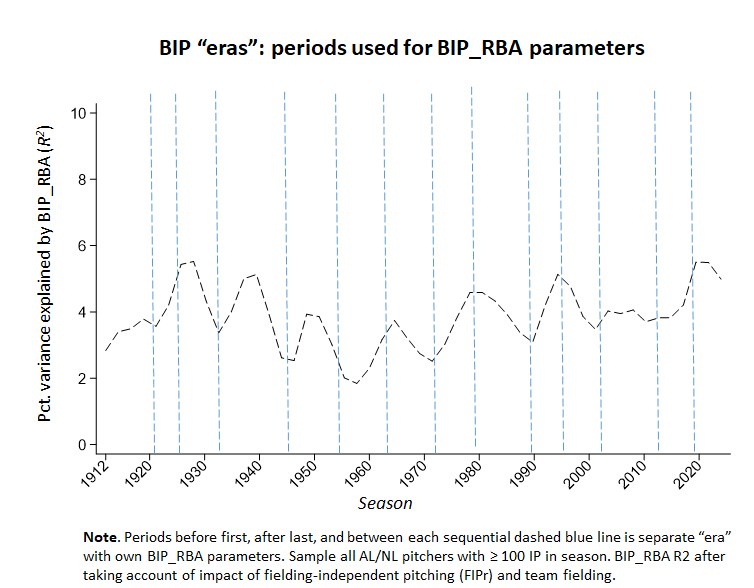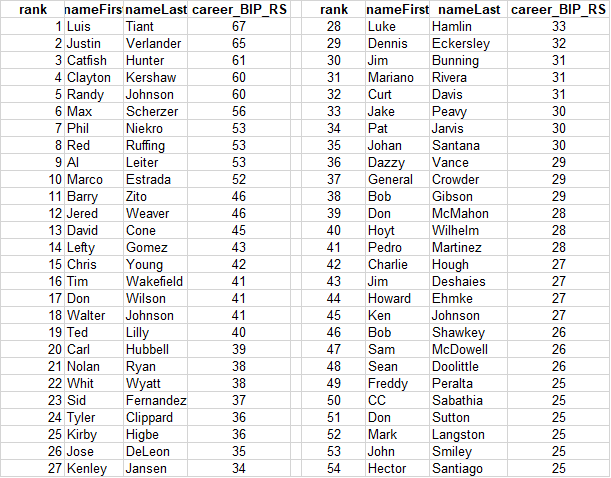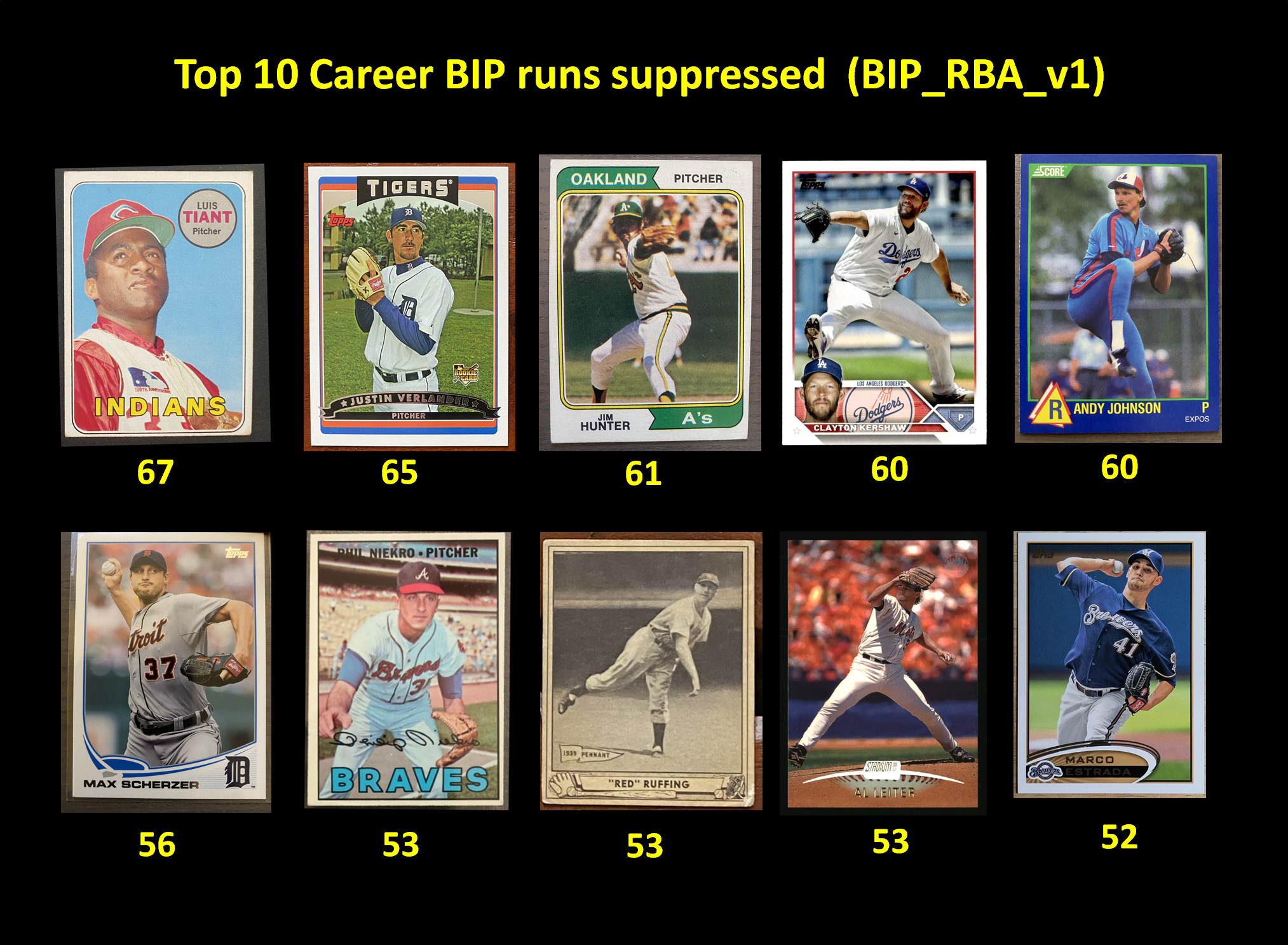update, 4.10.25
As you likely would have guessed, I’ve been obsessively refining the “balls-in-play runs below average”—BIP_RBA—metric. I feel what I have now can be officially designated “version 1.0,” superseding BIP_RBAb, the beta version of this measure.
The most significant revision involved respecifying the “BIP eras.” To compute BIP_RBAb, I fit models separately to seven distinct periods that tracked major fluctuations in MLB-wide run scoring.
After experimenting with a number of alternatives, I concluded the best strategy was to bin seasons based as closely as possible on the contribution that pitcher BIP propensities made to variance in runs scored. Accordingly, every AL/NL pitcher’s season BIP_RBA is based on parameters associated with one of 14 BIP eras. The parameters derive from a single, multi-level model that explains 67% of the variance in individual pitchers’ runs allowed per game over the span from 1912-2024.
I’ll say more in future posts about the mechanics of BIP_RBA_v1, and about the significance of it for the assessment of player performance generally and over discrete periods of AL/NL history.
But the fundamental strategy for extracting the impact of pitcher BIP tendencies remains unchanged: runs allowed per game are (1) related to individual pitchers’ rates of infield pop-ups and balls hit in the air to the outfield (and also effectively their rates of ground balls, the remaining type ball in play) after controlling for (2) the impact of their fielding-independent pitching performances and (3) their teams’ fielding proficiency.
Here are the top 50 career performances—actually 54, due to ties—for BIP “runs suppressed,” as measured by BIP_RBA_v1. The score is (a) the sum of BIP “runs below average” by season as determined by (b) the product of each pitcher’s season BIP_RBA (measured in runs below average per game) and his innings pitched for that season (c) divided by 9.
The identity of top performers overlaps substantially with the highest scorers under BIP_RBAb. The principal difference is a modest reallocation of the total BIP-run suppression over AL/NL history away from pitchers in the 1930s to pitchers in the 1960s and 1970s. Thus Red Ruffing, Carl Hubbell and Lefty Gomez lose ground to pitchers from other BIP periods; Tiant, Hunter and Niekro gain ground.
More to come! But if you are eager to see for yourself what’s under the hood, the data and scripts have been lodged in the data library.



